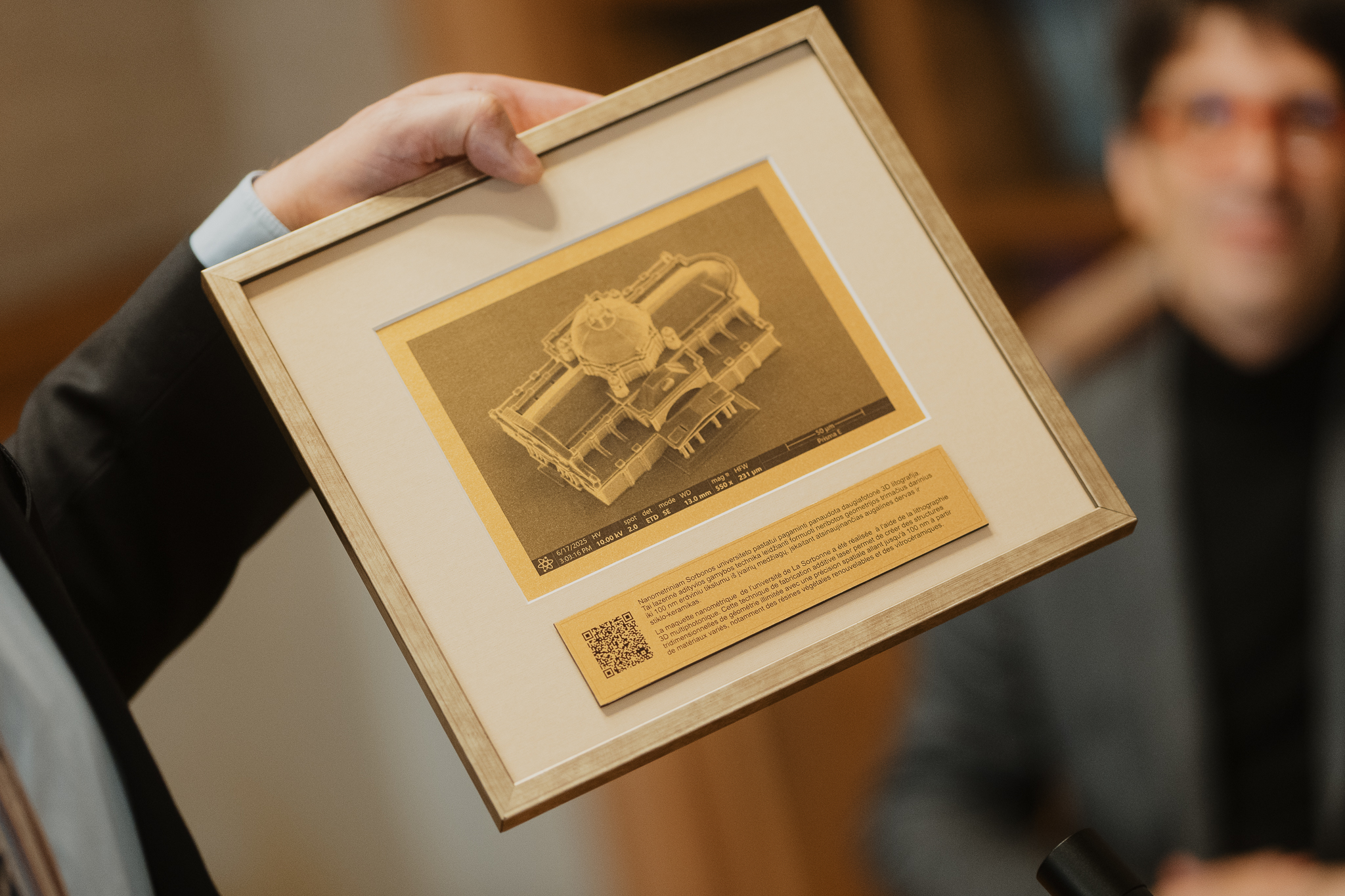Special Gift from VU Scientist: Human Hair-Sized Model of Sorbonne University Chapel Presented to the University’s President

On 26–27 June, during a visit to Vilnius University (VU) by a delegation from France’s Sorbonne University, its President, Prof. Nathalie Drach-Temam, was presented with a printed replica of the Sorbonne University Chapel, which appears as a mere dust particle to the naked eye. The special gift was created by Dr Gordon Zyla, a senior researcher at the Laser Research Center of the VU Faculty of Physics and a former Marie Skłodowska-Curie Postdoctoral Fellow.
The researcher is pleased to contribute to this project and to showcase the exceptional capabilities of the laser manufacturing techniques developed at the Faculty of Physics. When asked about the scale of the model compared to the actual chapel, the scientist offers some striking figures.
Commenting on the scale, Dr G. Zyla explains: ‘The length of the chapel is approximately 120 micrometres, making it slightly larger than the width of a human hair. What is most impressive, however, is first that the miniature is about 275,000 times smaller than the original and second, that despite this extreme downscaling, the intricate architectural details of the original are still preserved in the printed version.’
The sample was produced using a specific method called multiphoton 3D lithography. This technique represents an advanced form of 3D printing that is gradually making its way into more areas of everyday life.
‘Unlike conventional 3D printing, this approach can solidify a light-sensitive material at virtually any point in space, enabling the fabrication of truly three-dimensional structures. Interestingly, by using a sharply focused ultrashort-pulse laser beam, it is possible to initiate a polymerisation reaction with such precision that it creates spatial elements (voxels) just a few hundred nanometres in size. For comparison, a human hair is about 80 micrometres thick, roughly 500 times wider than the structures created by this method,’ says Dr G. Zyla.
Dr G. Zyla is one of the winners of the 2024 Young Scientist Co-Funding competition, with his research supported by the VU Foundation and was recently awarded an internal VU Postdoctoral Fellowship. He conducts research in light technologies at the Laser Research Centre, within the Laser Nanophotonics Group led by Prof. Mangirdas Malinauskas.
‘For example, simple spherical microelements–six times smaller than the chapel–can improve the resolution of optical microscopes beyond what standard lenses can achieve. Other tiny structures, carefully arranged in patterns, can shape and control light in new ways to enable novel interactions with matter. This may open up possibilities for future applications in bio-imaging, quantum technologies, telecommunications, and laser technologies,’ says the researcher.
Dr. Gordon Zyla completed his undergraduate, graduate, and doctoral studies at Ruhr University Bochum, Germany, under the supervision of Prof. Andreas Ostendorf, with part of his PhD research conducted at the University of Nebraska-Lincoln, USA, under the supervision of Prof. Yongfeng Lu. He previously worked for three years at the Institute of Electronic Structure and Laser of the Foundation for Research and Technology-Hellas (IESL-FORTH) in Greece under the supervision of Dr. Maria Farsari. During this time, he was awarded two prestigious fellowships: the Feodor Lynen Fellowship from the Alexander von Humboldt Foundation and the MSCA Postdoctoral Fellowship from the European Commission.